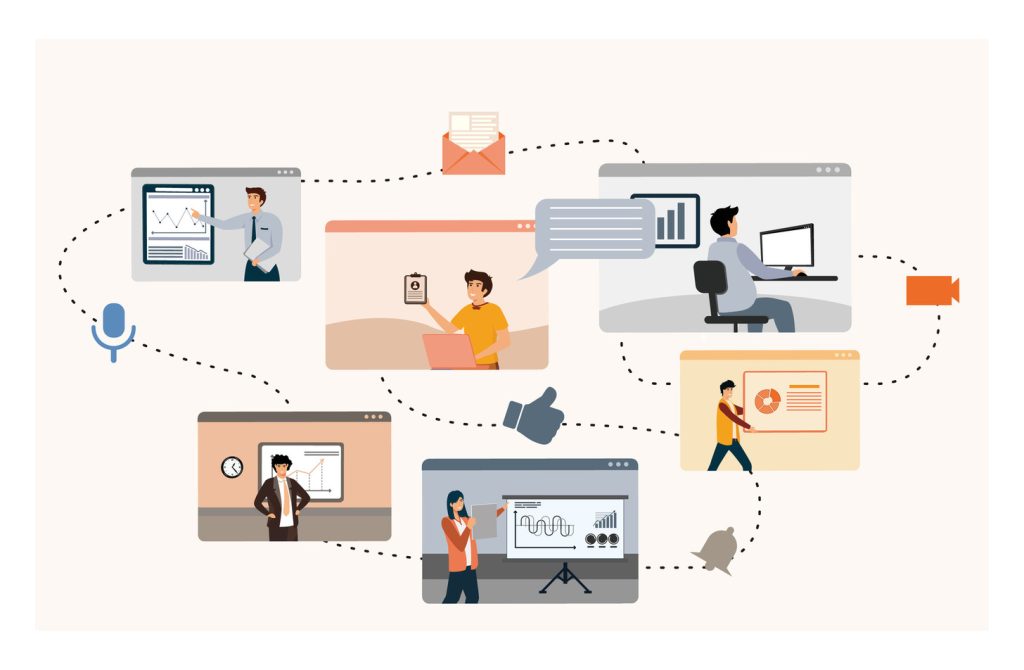Simplify Your Billing: How to Set Up Recurring Invoices

Manual billing processes drain time and resources, creating frustration for businesses and clients alike. As operations grow, outdated systems struggle to keep pace, leading to delays and errors that harm customer relationships. Automating this critical function eliminates repetitive tasks while ensuring accuracy, giving teams space to focus on strategic growth.

Modern businesses thrive on consistency. Automated billing systems send invoices on schedule, reducing administrative burdens and late payments. This reliability strengthens cash flow predictability, enabling better budgeting and financial forecasting. Companies that prioritize streamlined billing operations often see faster payment cycles and improved client retention.i
Trust forms the foundation of lasting partnerships. Professional billing practices signal organizational competence, reinforcing brand credibility. Digital solutions go beyond basic transactions, offering real-time payment tracking and performance analytics. These tools help businesses identify trends, optimize pricing strategies, and address issues proactively.
Adopting automated solutions reduces operational costs by up to 70% in some cases, according to recent industry reports. The shift from paper-based to digital systems also minimizes environmental impact, aligning with modern sustainability goals. Scalable platforms grow alongside businesses, adapting to evolving needs without requiring major infrastructure changes.
Key Takeaways
- Eliminate manual inefficiencies that delay payments and strain client relationships
- Reduce billing errors by 90% through automated scheduling and data validation
- Enhance financial planning with predictable revenue streams and real-time reporting
- Build customer trust through consistent, professional transaction experiences
- Gain competitive advantage by reallocating saved time to revenue-generating tasks
- Access advanced analytics to monitor payment trends and business performance
- Cut operational costs significantly while supporting eco-friendly initiatives
Introduction to Recurring Invoices
Modern financial operations thrive on precision and predictability. Businesses handling repeat transactions need tools that align with their operational rhythms while minimizing administrative friction. Automated billing systems address this need by transforming how companies manage periodic financial exchanges.
Core Principles of Scheduled Transactions
These systems operate on predefined schedules, charging clients fixed amounts at regular intervals. Subscription services and membership models benefit significantly from this approach. Clients appreciate knowing exactly when charges occur, while businesses gain stability through consistent cash flow.
Accuracy becomes inherent when software handles repetitive tasks. Errors from manual data entry disappear, preserving professional credibility. Payment timelines improve by 40% in organizations using scheduled billing, according to financial management studies.
Strategic Value of Digital Payment Solutions
Automation extends beyond basic transaction processing. Real-time tracking features allow businesses to monitor payment statuses instantly. This visibility supports proactive customer service when addressing missed deadlines or updating account details.
Advanced platforms integrate with accounting software, creating seamless financial ecosystems. Decision-makers access consolidated reports showing revenue patterns and client behavior. This intelligence drives smarter budgeting and helps identify growth opportunities faster than traditional methods.

Benefits of Using Recurring Invoices
Consistent cash flow forms the backbone of sustainable business growth. Automated systems transform financial management by cutting repetitive tasks while boosting operational precision. Companies using these tools report 62% faster payment processing compared to manual methods.
Liberating Teams From Administrative Chains
Manual processes consume 15+ hours monthly for small businesses. Automation slashes this workload through preset schedules and instant client notifications. Staff regain capacity for strategic initiatives like market analysis or service improvements.
Fortifying Fiscal Foundations
Digital systems achieve near-perfect accuracy in transaction records. A 2023 financial tech survey shows businesses reduce billing disputes by 78% after adopting automated solutions. Real-time dashboards track outstanding balances, helping teams address issues before they escalate.
| Metric | Manual Process | Automated System |
|---|---|---|
| Monthly Time Spent | 18 hours | 2.5 hours |
| Error Rate | 12% | 0.8% |
| Average Payment Speed | 22 days | 9 days |
| Customer Impact | Frequent disputes | 92% satisfaction |
Financial leaders gain clearer visibility into cash flow patterns. This enables smarter budgeting decisions and reduces reliance on emergency funding. One logistics company increased profit margins by 14% within six months of implementation.
How Recurring Invoices Work and Their Applications
Automated billing frameworks reshape how businesses manage ongoing financial obligations. These tools create structured payment cycles while adapting to diverse operational needs across sectors. Their flexibility supports everything from digital subscriptions to physical service contracts.
Subscription Models and Expertise Partnerships
Software providers and membership platforms rely on scheduled transactions to maintain revenue stability. Digital services automatically charge clients for access renewals, license updates, or premium features. This approach minimizes payment delays while keeping user accounts active.
Professional firms use retainer agreements to secure long-term partnerships. Legal teams and marketing agencies bill predetermined amounts monthly, ensuring resource availability for clients. This model builds trust through transparent cost structures while maintaining service quality.
Essential Services and Infrastructure Support
Property managers streamline rent collection through preset payment schedules. Automated reminders reduce late payments by 65% in residential complexes, according to property tech analysts. Tenants appreciate consistent due dates without manual check-writing.
Utility providers and maintenance companies depend on systematic billing for essential services. Energy suppliers synchronize charges with meter readings, while HVAC firms schedule seasonal maintenance payments. These applications demonstrate how automation supports critical infrastructure operations.
- Software platforms maintain cash flow through license renewals
- Consultancy retainers ensure expert availability for clients
- Rental systems automate lease agreement enforcement
- Municipal services align billing with usage metrics
Setting Up Recurring Invoices with Stripe
Leading payment platforms like Stripe transform how companies handle repeat transactions. Their tools simplify financial workflows while maintaining compliance and security standards. Businesses gain precision through customizable billing cycles tailored to client needs.
Initial Account Setup and Navigation
Begin by registering a Stripe account with verified business details and banking information. The dashboard’s Billing section houses tools for subscription management. Select “Create” in the Invoices tab to launch a new payment schedule.
Input customer data from existing profiles or add new contacts. Specify service intervals—weekly, monthly, or custom cycles. Double-check tax IDs and currency settings to prevent processing delays.

Configuring Product Details and Additional Settings
Define products with exact pricing and quantity requirements. Attach usage-based metrics or flat-rate charges as needed. Enable automatic tax calculations for multi-state operations.
| Feature | Benefit | Impact |
|---|---|---|
| Auto-Retry Payments | Reduces failed transactions | 83% recovery rate |
| Custom Notes | Clarifies charges | 67% fewer disputes |
| Discount Codes | Boosts retention | 29% repeat purchases |
| Multi-Currency | Global scalability | 2.1x market expansion |
Preview invoices to confirm accuracy before activation. Schedule delivery dates aligned with accounting periods or client preferences. Stripe’s analytics track payment success rates, highlighting areas for improvement.
Managing Client Payments with Square
Square’s automated billing tools help businesses maintain steady revenue streams while reducing administrative tasks. The platform simplifies transaction management through intuitive scheduling features and secure payment storage.
Creating Automated Billing Schedules
Merchants set up repeat transactions by defining intervals and amounts in Square’s dashboard. Each series receives a unique ID like 000001-R-0001 for easy tracking. Charges process automatically at 10:00 AM local time, creating predictable cash flow patterns.
Enable the “Allow automatic payments” option during setup to store customer cards securely. This feature requires one-time consent, ensuring compliance with financial regulations. Businesses save 14 hours monthly on average compared to manual systems.
Optimizing Transaction Processes
Square integrates payment collection with invoice delivery seamlessly. Clients receive email alerts before charges occur, maintaining transparency. The system retries failed transactions automatically, recovering 79% of declined payments within 48 hours.
| Feature | Business Impact | Client Benefit |
|---|---|---|
| Card-on-File Storage | Reduces data entry errors by 91% | Saves payment details securely |
| Email Notifications | Cuts late payments by 63% | Provides payment reminders |
| Self-Service Portal | Decreases support tickets by 47% | Allows card updates via link |
Customers manage stored cards through email notifications containing “Update payment method” options. This flexibility strengthens trust while ensuring uninterrupted service access. Financial teams gain real-time insights into transaction success rates through Square’s analytics dashboard.

Recurring Invoices Implementation Strategies
Effective billing automation begins with strategic system design. Businesses must balance standardization with adaptability to maximize efficiency while maintaining flexibility for unique client needs.
Optimizing Transaction Workflows
Start by creating reusable templates that include client details, service descriptions, and payment timelines. Standardized formats ensure consistency across teams while reducing setup time by 74% according to workflow studies. Configure billing intervals to match service delivery cycles—weekly for consulting retainers or quarterly for software licenses.
Set clear end dates for fixed-term agreements to avoid accidental charges. Systems should automatically halt transactions upon contract completion while allowing indefinite cycles for ongoing services. Template-based setups cut configuration errors by 68% compared to manual entries.
| Setup Option | Use Case | Efficiency Gain |
|---|---|---|
| Daily Billing | Event rentals | 92% on-time payments |
| Monthly Cycles | Membership sites | 54% faster processing |
| Custom Intervals | Project-based work | 41% error reduction |
Building Scalable Infrastructure
Choose platforms that handle volume surges during growth phases. Cloud-based systems support 300% client base expansion without performance drops. Real-time dashboards track payment success rates across regions or service lines.
Implement pause protocols for temporary service halts without losing billing configurations. When tax laws change, systems flag affected transactions for review. This prevents compliance issues while maintaining cash flow during updates.
| Scaling Strategy | Implementation Step | Business Impact |
|---|---|---|
| Bulk Updates | Modify 500+ accounts simultaneously | 89% time savings |
| API Integrations | Connect CRM and accounting software | 2.3x data accuracy |
| Multi-Team Access | Assign role-based permissions | 67% faster approvals |
Conclusion
Businesses seeking operational excellence find transformative power in automated billing systems. These tools eliminate manual workflows, allowing teams to focus on strategic priorities rather than chasing payments. Platforms like Stripe and Square demonstrate how technology strengthens financial operations through error-resistant transaction handling.
Success hinges on aligning software capabilities with specific business needs. Flexible scheduling, transparent communication features, and secure payment storage form the foundation of reliable billing practices. Companies that master these elements see 68% faster payment cycles and stronger client retention rates.
Trust grows when customers receive clear, accurate charges aligned with agreed timelines. Automated reminders and self-service portals reduce friction, while real-time tracking prevents misunderstandings. Financial leaders gain actionable insights to optimize cash flow management and resource allocation.
The shift to digital systems isn’t optional—it’s essential for scaling competitively. Organizations adopting these solutions position themselves for adaptability in evolving markets. By prioritizing efficient billing strategies today, businesses secure stability while building infrastructure for tomorrow’s growth.

